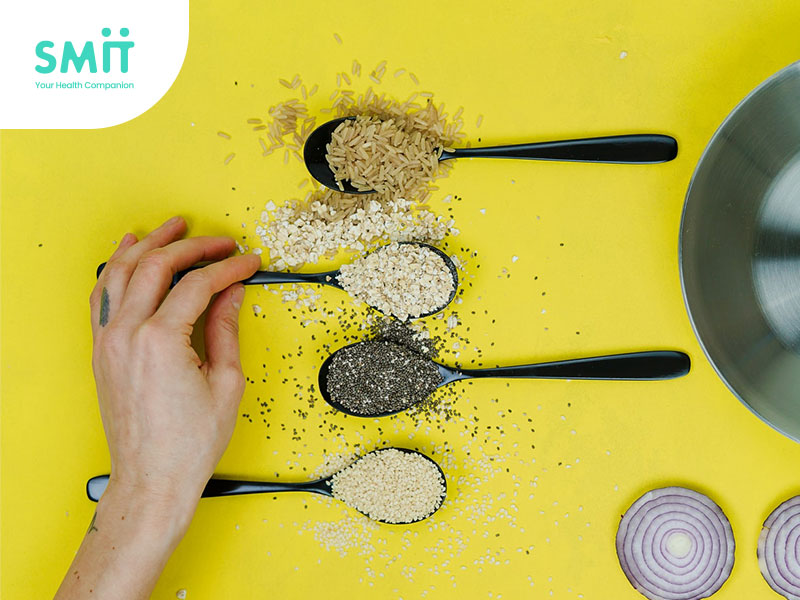Millets are cereal grains belonging to the grass family. There are numerous varieties available across India. Millets have always been an integral part of our Indian food culture for ages. Roughly about 50-60 years ago, millets were a staple diet in India. Although majorly consumed in southern parts of India and the hills of Uttarakhand, nowadays, millets are also consumed in many other states.
Types of Millets
This crop is divided into two categories — major and minor millets, with major millets being the most popular or commonly cultivated varieties
Major millets
Major millets can be consumed as they are as they do not have husks. Major millets include;
- Pearl
- Foxtail
- Proso (or white)
- Finger (or ragi)
Minor Millets
Millets that fall under the minor millets category needs husking before they are suitable for consumption. Minor millets include:
- Kodo
- Barnyard
- Little
- Guinea
- Browntop
- Fonio
- Adlay (or Job’s tears)
Many families in southern India use minor millets as their staple food.
What makes millets so special
These seeds are packed with nutrients like:
- Fibre
These are around 65% carbohydrates, out of which a major portion is a fibre.
- Proteins
Millets have a balanced amino acid composition and are therefore considered a complete vegetarian protein.
- Micronutrients
Millets are rich in vitamins like Riboflavin, thiamine, niacin, and minerals like phosphorus and magnesium.
- Phytochemicals
These are bioactive plant compounds and play a major role in the immunity-building process. Millets are rich in phytochemicals like tannins, anthocyanins, and phenolic acid.
- Calcium
Millets are rich in calcium and work well for bone health.
Millets like Jowar and Bajra, ragi, little millet, banyan millet, foxtail, Kudo millet have a more or less similar nutritional value. Rice or chapati can be easily replaced with millets.
How do millets help us?
- Millets & Diabetes
Diabetes affects the normal levels of blood sugar levels. Due to either insufficient insulin production or insufficient uptake of blood sugar by the cells, blood glucose levels rise. Raised blood glucose levels can be reduced or managed by regular exercise and a well-balanced diet. A diet rich in soluble fibre, sufficient antioxidants, good quality protein, and less fat is recommended for individuals who have diabetes.
Millets work wonders for people with diabetes, especially for type 2 diabetes, because of their fibre and magnesium content. Fibre increases the transit time, helping to bring down escalated sugar levels by controlling sugar spikes. Including millets in one meal can show benefits by controlling blood glucose levels. Magnesium increases insulin sensitivity.
One of the other key features of millets is their low glycemic index. It is one of the main reasons why it should be a part of meals for people with diabetes. A fibre-rich diet not only brings down PP and Fasting levels but also reduces the average blood glucose levels -HbA1c. Research shows the benefits of barnyard millet in type II diabetes.
Want to control blood glucose levels with millets?
Key points to remember
-
- Portion control is important
- The form in which is it consumed may affect blood sugar control – whole millets are preferred over fine millet flours.
- The glycemic load of the meal should be taken into account. Millet preparation with thick, calorie-dense gravies can increase the glycemic load and may not help control sugar levels.
- Cooking method
Overcooked millets may not provide the same benefits as perfectly cooked millet.
An adequate amount of protein and veggies should be consumed with millets to balance carbohydrates, proteins, and micronutrients.
- Millets & high cholesterol
Cholesterol is not always bad as hormones do need a small amount of cholesterol. Cholesterol is fat-like matter and is produced within the body. Even though cholesterol is needed by the body, high levels may prove to be dangerous for cardiac health.
A fibre-rich diet plays an important role in reducing elevated cholesterol levels. Fibre binds to bile salts and dietary fats and helps to expel them from the system, showing results in maintaining/lowering cholesterol levels.
- Millets and constipation
Constipation is a condition where a person experiences difficulty either in emptying waste matter or in the frequency of clearing waste matter. Along with other lifestyle changes, fibre-rich diets show positive results. Fibre acts as a brush to cleanse the digestive tract and clears waste deposited matter. Millets have a low glycemic index and are one of the main reasons why they can be included in the daily meals of people with diabetes.
- Millets and gluten sensitivity
Gluten sensitivity is the term used when a person develops allergic symptoms like bloating, skin rashes, and digestive distress after consuming wheat or related products containing wheat. Here the body is unable to digest a protein called gluten present in wheat. Millets (gluten-free grains) also work well for individuals who are gluten sensitive.
- Millets and Obesity
Obesity is a condition where the body fat deposition crosses the desired fat percentage. Excess body weight in terms of fat invites many other health complications, for instance, diabetes, PCOS, thyroid, hypertension, and cardiac issues. Right food choices take us a long way in keeping obesity at bay, along with related complications.
A diet containing a high portion of seasonal vegetables and fruits, fibre-rich and protein-rich grains like millets, nuts, and seeds together manage body fat percentage. The right proportion of fat and protein is best for fat reduction.
Quick and healthy millet-based meals
- Millet Upma
- Millet veggie Khichdi
- Millet dosa with veggie sambar
- Millet idlis with veggie sambar
- Millet Sweet Pongal
- Millet porridge
- Quinoa veggie salad
It is time to bring back millets in our meals and use the power of millet nutrition to keep ourselves healthy and fit.
Summary
Millets are gluten-free seeds packed with nutrients like fibre, proteins, phytochemicals. Millets become a great choice not only for people with celiac disease or gluten intolerance, and but even for people with lifestyle conditions. An additional benefit of millets is these seeds have an alkalizing effect on the body.
The results of including millets in routine are promising; hence are recommended for everyone irrespective of age, gender, and health conditions.



0 Comments